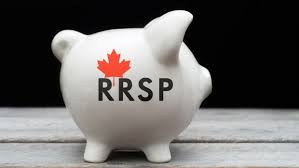Feb
05
2018
By Brenda Phelan
More than 60 years ago, the federal government introduced RRSPs to encourage Canadians to plan and save for their own retirement in order that they would not rely solely on public or corporate pension plans. As it happens, all these years later, they are more needed then ever.
Here are 5 good reasons why RRSPs are a good option for retirement savings:
- A reduced number of Canadians have generous corporate pension plans in their workplace
- Longevity has increased significantly and so we have a need for more retirement savings
- The average household spending (including taxes) for those over age 65 and older was $58,000 approximately in 2016
- Relying on CPP and OAS alone may not provide a comfortable retirement for most people
- TFSA's are a good add on to retirement savings but since they are a relatively new option, maximums for those over age 18 in 2009 are still in the neighbourhood of $60,000.
That all adds up to Canadians needing to make individual savings for retirement more important
Here are 10 ways to achieve RRSP success which will help ensure that your future self-appreciates your current self:
- Start early. Time is precious when it comes to saving for retirement and procrastination can be costly. Missed contributions earlier in life can result in thousands of lost dollars later in investment returns.
- Make savings a habit. Set aside a specific amount each month and live without it. The best way to do this is by setting up an automatic monthly contribution plan
- Match savings to income. As your income increases, so does your standard of living now and in retirement, so whenever your income increases, increase your monthly savings
- Maximize your contribution. The more money you can shelter from taxes inside an RRSP, the faster your savings will grow
- Equalize future retirement income with a spouse. A spousal RSP offers an opportunity to defer taxes now and utilize income splitting by way of equalizing each spouse’s future retirement income. That can reduce your the overall family tax bill in retirement.
- Make tax efficient deduction decisions. RRSP contributions are tax deductible but need not be deducted in the year you make the contribution. You can optimize and maximize the tax refund by taking the deduction if you are fairly certain your marginal tax rate will be higher in a future year.
- Resist the temptation to dip into your RRSP. Withdrawals are taxed at your marginal rate and unlike a TFSA, contribution room is not restored
- Chose the right investment strategy. During your early years with long term investment horizon, focus on maximizing growth. In later years, include enough growth assets to protect against inflation. A properly balanced investment portfolio is key.
- Power up your RRSP by borrowing. Borrowing money to invest can be an effective way to maximize
- Give considerable consideration to estate planning. In most provinces you can designate a beneficiary for an RRSP which means that the RRSP would not generally form part of the estate.
Your RRSP is a key part of your retirement plan. Working with a professional financial advisor can help you maximize it and help you make good financial choices generally.
Let's chat.



